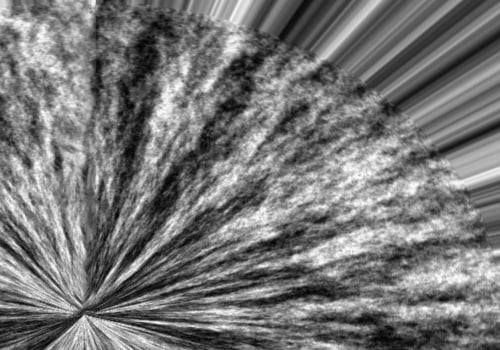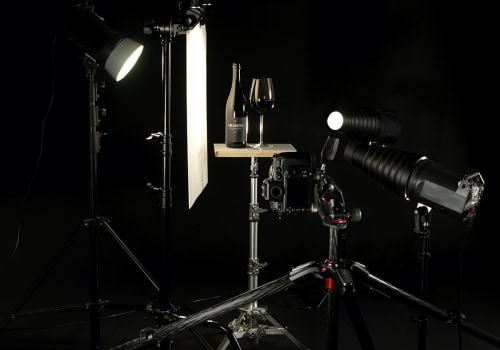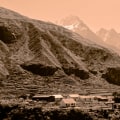Are you looking for the perfect lighting to make your food photography stand out? LED lighting is an ideal choice for capturing amazing photos of delicious dishes. Not only does LED lighting provide an even, natural-looking light, it is also energy efficient and cost-effective. In this article, we'll explore the benefits of LED lighting for food photography and show you how to get the best results from your setup.
Using LED Lighting to Capture the Perfect Shot
When it comes to capturing the perfect shot with LED lighting, there are certain techniques and tips to keep in mind. Adjusting the intensity of your lights is one of the most important steps in achieving the desired effect.By adjusting the intensity, you can control the shadows and highlights to create depth and dimension. Additionally, you should consider the positioning of your lights. LED lighting is versatile enough to be used in a variety of different scenarios. Depending on the type of shot you are trying to capture, you may want to adjust the position of your lights accordingly.
For example, a close-up shot may require a single light source placed above and slightly to the side of the food. A wider shot might require multiple lights with one placed in front and one behind the food. When using LED lighting for food photography, it is important to keep in mind the color temperature of your lights. Food photography often requires a more natural look and feel, so using a light that matches natural daylight temperatures is ideal. This will help you achieve accurate color representation and make editing easier. Finally, there are several accessories available that can help you achieve even better results with LED lighting.
Diffusers and gels are two of the most popular options. Diffusers help soften harsh shadows and create a more natural look, while gels allow you to adjust the color temperature of your lights for more accurate color representation. }
Benefits of LED Lighting
LED lighting is becoming increasingly popular in the world of food photography due to its unique benefits over traditional lighting methods. LED lighting provides better color accuracy and a more energy-efficient setup than traditional lighting methods, which can help you capture the perfect shot.The main advantage of LED lighting for food photography is its superior color accuracy. LED bulbs produce a more consistent light output than traditional bulbs, which helps to ensure that colors appear natural and accurate in the resulting photograph. Additionally, LEDs have a wider color range than other traditional lights, which allows for more flexibility when it comes to capturing different shades and hues. In addition to better color accuracy, LED lighting also offers a more energy-efficient setup compared to traditional lighting.
LEDs use significantly less electricity than traditional bulbs, so they can save you money on your electric bill while still providing great lighting quality. LEDs are also more durable than traditional bulbs, which means they will last longer and require less maintenance. Finally, LED lighting can help you capture the perfect shot with its adjustable intensity and direction. With LED lighting, you can easily adjust the intensity of the light to get the exact effect that you want in your photos.
You can also direct the light to specific areas of the photo to create interesting shadows and highlights.
Setting Up Your Equipment
Setting up your equipment for food photography with LED lighting is important for achieving the best results. You will need to make sure that the lights are correctly positioned so that you can get the desired lighting effect and ensure that all of the food is illuminated. Additionally, you'll need to adjust the settings on your lights and camera for optimal results. Positioning your LED lights is key for food photography. You should place them at an angle so that they can light up the entire subject evenly and create an interesting effect.You may need to experiment with different placements and angles to find the perfect lighting setup for each shot. Additionally, you should also consider how far away from the food you place the lights, as this will affect the brightness of the image. Once you have positioned your LED lights correctly, it's time to adjust the settings on your lights and camera. If you are using a digital camera, you should change the white balance setting to ensure accurate colors in the image. Additionally, you should adjust the ISO and shutter speed settings to get the right exposure.
Finally, you should adjust the brightness and color temperature of your LED lights to get the desired lighting effect. Setting up your equipment correctly is essential for getting great results with LED lighting for food photography. By positioning your lights correctly and adjusting your settings, you can ensure that you capture stunning images every time.
Types of LED Lighting
There are several types of LED lighting available for food photography, each with its own advantages and disadvantages.Strip Lights
are a popular choice for food photography. They provide a soft, even light that is great for illuminating food. The downside is that they can be bulky and difficult to work with in tight spaces.Panel Lights are an alternative to strip lights. These lights are smaller and provide a more focused light. They can be used to create dramatic lighting effects, but they can also be expensive and require extra power to operate.
Ring Lights
are a type of LED light that provides a unique circular light pattern. This type of light is great for creating a soft and even light, but it can be expensive and requires additional power. Overall, the type of LED lighting you choose will depend on your specific needs.Strip lights provide a soft, even light, while panel lights offer more flexibility and control. Ring lights provide a unique look, but they require more power and can be costly. Consider your budget and the type of shots you want to take before making your decision. In conclusion, LED lighting for food photography offers an array of advantages over traditional lighting methods. With LED lighting, food photographers can achieve better color accuracy, more energy-efficiency, and easier setup.
With a little practice and patience, anyone can use LED lighting to take amazing food photos. LED lighting is becoming increasingly popular in the world of food photography, and it's easy to see why. With the right LED lighting setup, photographers can create stunning images with a fraction of the effort and cost of traditional lighting.








Leave a Comment